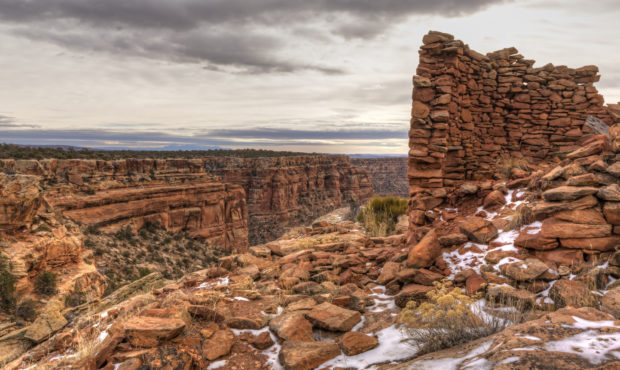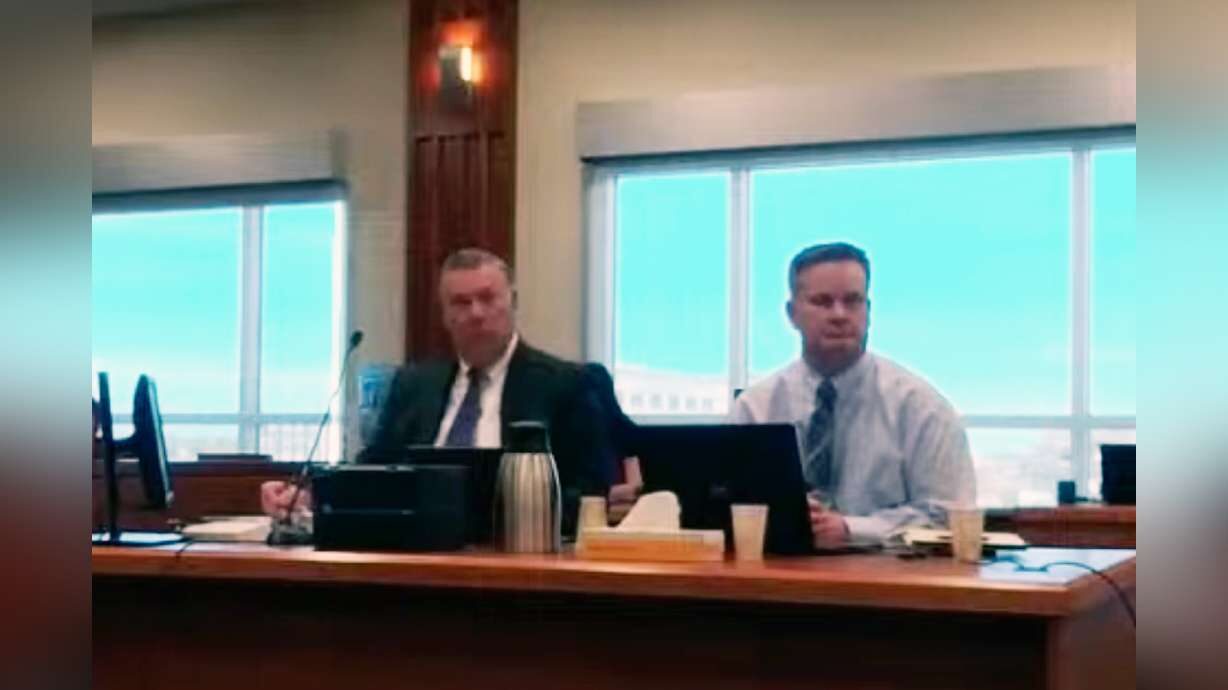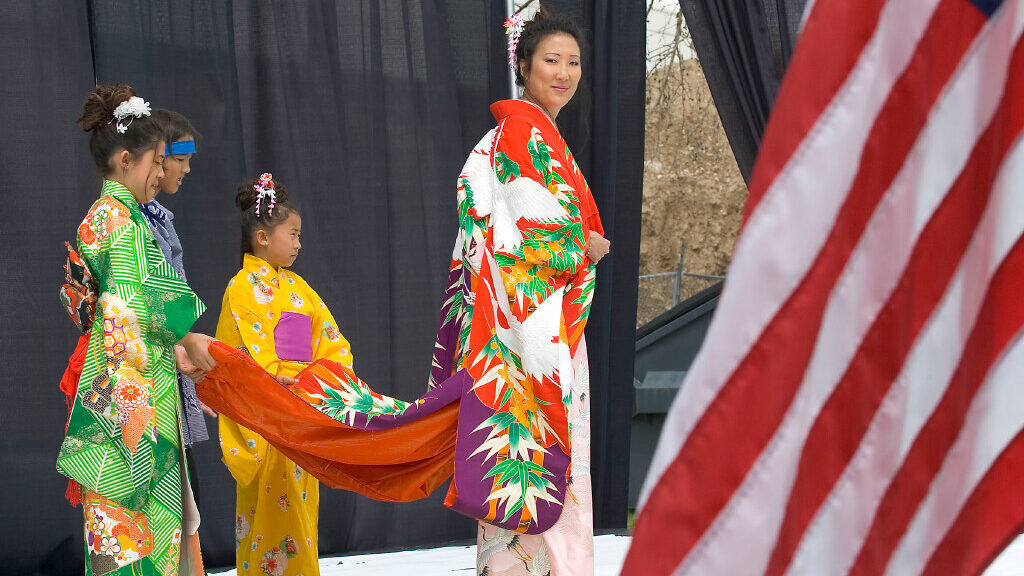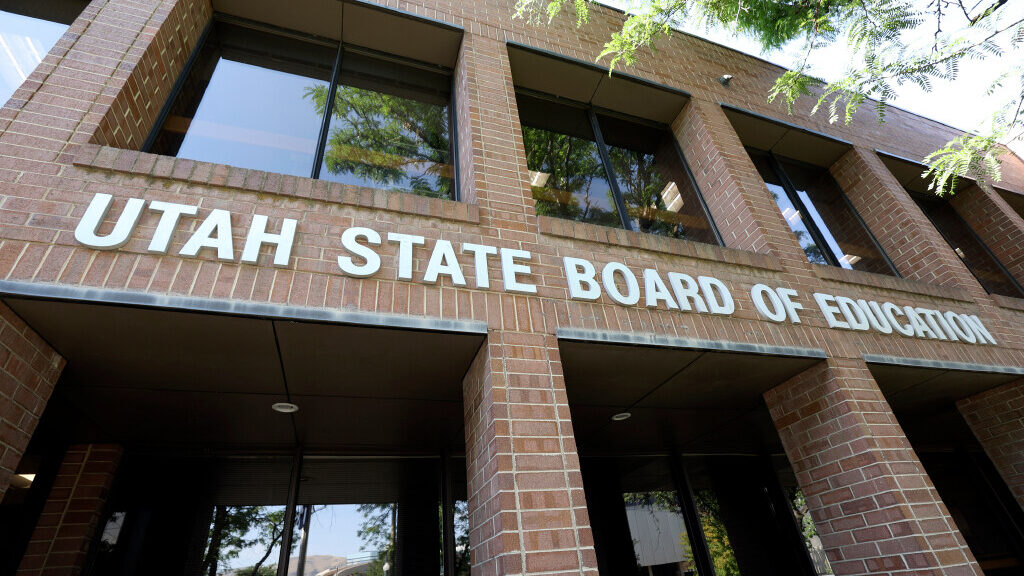A rocky corner in southern Utah has brought 5 tribes together. An executive order is reviving effort to protect them
Feb 3, 2021, 5:36 PM | Updated: Feb 4, 2021, 10:14 am

Snow-covered remnants of an Anasazi tower ruin on the rim of Mule Canyon in the Cedar Mesa area of Bears Ears National Monument
SAN JUAN COUNTY (CNN) — A rocky corner in southern Utah has been the focal point of protests and political battles for years. A recent move by the Biden administration is giving Native tribes hope that a broken promise could be mended.
On his first day in office, President Joe Biden ordered federal officials to review the boundaries of Bears Ears National Monument — a sprawling region rich in red rock canyons, cliff dwellings and numerous archeological sites that former President Donald Trump drastically shrunk in size (December 4, 2017) only 11 months after its official designation (December 28, 2016).
Bears Ears has united five tribes that trace their lineage to this region in a fight to protect a land they consider sacred and a chance to have a voice in how their ancestral homelands are managed. For Native people, Bears Ears is key to their distinctive origin legends, the spirits of their ancestors and their own “way of life.”
“Bears Ears represents a place of refuge, a place of commerce, a place of practicing their culture, and most importantly, a place of spiritual and theological practice,” said Patrick Gonzales-Rogers, executive director of the Bears Ears Inter-Tribal Coalition, a group formed in 2015 by the tribes to advocate for the monument.
In 2017, the monument’s boundaries were reduced by roughly 85% after past presidents abused a law that grants them authority to declare national monuments “to lock up vast swaths of public land,” former Interior Secretary Ryan Zinke wrote in a CNN op-ed at the time.
The future of the monument has remained mostly in limbo since then while Trump’s actions are challenged in court and the Bureau of Land Management worked to develop new land use plans for Bears Ears.
The recent executive order signed by Biden reignited that years-long struggle between those who argue that land protection and management by federal agencies is government overreach, and those who seek to preserve the land they consider sacred.
A yearslong effort for stewardship
The mesas, cliffs and canyons in the 1.3 million acres of Bears Ears have been inhabited for tens of thousand of years, archeologists say. Some of its history has been written in sandstone walls and its hills provide healing for tribal members.
At different time periods, Bears Ears has been home to the Navajo Nation, the Hopi Tribe, the Ute Mountain Ute Tribe, the Pueblo of Zuni and the Ute Indian Tribe. Each tribe has ancestral ties to Bears Ears that date back to time immemorial.
While the monument stands outside reservation boundaries, Native people might visit to collect firewood and medicinal herbs as well as to hunt, fish or run in prayer. Meanwhile, those who live far or outside the state often make pilgrimages to the area to connect with their ancestors’ spirits.
More than five years before Bears Ears sparked nationwide controversy, Native leaders in San Juan County — where the monument is located — began looking into a way to protect the land. They didn’t want to be merely observers while others debated the management of public lands. About 47% of the population in San Juan County is Native American, according to US Census estimates.
Utah Diné Bikéyah or “People’s Sacred Lands,” a Navajo-led group, interviewed numerous elders and proposed multiple government protections for Bears Ears to local and state officials. As the years passed, leaders from different tribes joined efforts and they created conservation plans that would allow the tribes to co-manage the land.
“Those five tribes have their own way of traditionally take care of the land and is particularly different from the Western way of taking care of the land. So we came up with a thought out plan from these different tribes,” said Woody Lee, executive director of Utah Diné Bikeyah.
In 2016, former president Barack Obama used the Antiquities Act to designate Bears Ears as a national monument, noting that members of Congress, Secretaries of the Interior, state and tribal leaders, and local conservationists had proposed protections for at least 80 years.
In his proclamation, Obama directed officials to engage tribal government officers in the development of a management plan for the monument.
Before a year had passed, the tribes and their supporters went from “an incredible amount of jubilation and joy,” Gonzales-Rogers said, to a feeling of “loss and a form of depression.”
Trump had decided to split the monument into two separate units that comprised approximately 201,876 acres. The boundaries had been cut by roughly 85%.
Ancient history in danger
From the low desert elevations to the highest mountain areas in Bears Ears, there’s evidence of 10,000 years of human occupation, said Lyle Balenquah, a Hopi archeologist who has studied the area extensively.
“There has never been a time when the whole region has never been occupied by some Indigenous group, all the way back into the Paleolithic era and into the modern era,” Balenquah said. “It contains one of the densest concentrations of archaeological sites in the Southwest.”
Small groups of archeologists have drawn maps in recent years, photographed multiple sites and analyzed a number of artifacts but Bears Ears remains scarcely documented, Balenquah said.
Surveying such a sprawling area is considered a daunting task for any archeologists and Trump’s decision made it even more challenging. A significant portion of Bears Ears became vulnerable to the drilling industry and threatened by irresponsible tourism.
While the original boundaries of the monument would have prevented new oil and gas exploration or mining in more than 1 million acres, the change left roughly 85% open to new leases.
A number of conservation groups that joined the tribes in a federal lawsuit aiming to invalidate Trump’s order have argued that drilling and mining “would permanently scar lands that rightfully belong inside national monuments and belong to the American people.” The lawsuit is ongoing.
No oil, gas or coal leases have been issued within the current Bears Ears boundaries or for those lands excluded by the Trump declaration since the original designation in 2016, said Richard Packer, a spokesman with the Bureau of Land Management.
The controversy over the monument’s boundaries has drawn even more visitors, making archeologists refocus their work to high traffic areas.
“We know it’s old but for the everyday visitor that comes in, they don’t know how old it is and they may not realize how fragile these areas are,” Balenquah said. “They may not understand that the only reason why some of these places are still standing is because nobody has been visiting them for long periods of time.”
Unlike national parks or other monuments, there are no signs telling visitors that they’ve entered Bears Ears. Federal officials have not built trailhead signs, fences or bathrooms for visitors.
“You could just walk right up to this 800-900 cliff dwelling,” said Josh Ewing, executive director of local nonprofit group Friends of Cedar Mesa.
Fearing that scores of visitors would damage the landscape, Friends of Cedar Mesa raised hundreds of thousands of dollars to build and operate a visitors center. Volunteers have built fences to keep animals out of some archeological sites, filled eroded areas with soil, remove graffiti and hike through the monument to teach proper etiquette to visitors, Ewing said.
As an archeologist, Balenquah says he knows it’s important to preserve Bears Ears because it’s key to understand Indigenous history. As a Hopi person, he can’t let his culture and his ancestors’ representation be erased.
“We have stories, songs, prayers and ceremonies that talk about these ancestral places,” Balenquah said. “We feel that we should have a greater say in how that landscape is managed and a greater role in whatever the Biden administration chooses to do.”
The-CNN-Wire
™ & © 2021 Cable News Network, Inc., a WarnerMedia Company. All rights reserved.













